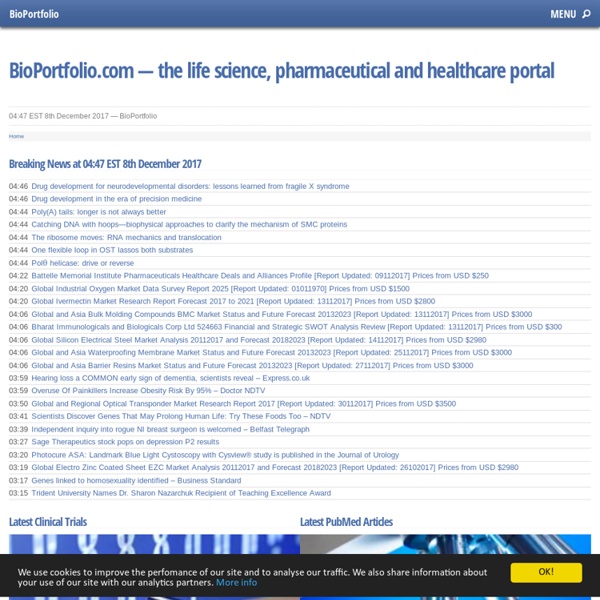



Evaluate Pharma Welcome | bioontology.org ThermoGenesis » Home The Pharma Letter BioSharing Cannabis for Spasticity in Multiple Sclerosis Primary Outcome Measures: Change in an objective measurement of spasticity between the pretreatment assessment and the 3- and 7-week assessments [ Time Frame: 7 weeks ] [ Designated as safety issue: Yes ] Secondary Outcome Measures: Differences between active agent and placebo in the changes in Ashworth Scale, Functional System Score, Expanded Disability Status Score, Ambulation Index, Functional Composite Score, and Quality of Life Inventory. [ Time Frame: 7 weeks ] [ Designated as safety issue: Yes ] The treatment of MS is far from satisfactory. Recent research into the CB1 and CB2 cannabinoid receptor systems suggest that cannabis may have the potential for affecting both the pathogenic mechanisms and the symptoms of MS. Comparisons: Three treatment arms will be compared: inhaled cannabis and oral placeboinhaled placebo and oral THCinhaled placebo and oral placebo, with the effects of these agents analyzed at thirty and sixty days.
ATC/DDD Index A searchable version of the complete ATC index with DDDs is available below. The search options enable you to find ATC codes and DDDs for substance name and/or ATC levels. In your search result you may choose to show or hide the text from the Guidelines for ATC classification and DDD assignment linked to the ATC level. ATC code All ATC levels are searchable.A search will result in showing the exact substance/level and all ATC levels above (up to 1st ATC level). Name "Name" is defined as the name of the substance (normally the INN name) or the name of the ATC level. The DDDs, which will be reviewed in 2016 (3 year revision), are listed here and in the annex I in the printed ATC Index. To express the DDD several abbreviations are used for units and routes of administration. Units Route of administration (Adm.R)
Interpretome Load your genome file (upper-right corner) and choose some of the analyses above. Currently, only raw data files from 23andme and Lumigenix (unzipped) are supported. Sample genotype files (and a description of the individuals) can be found here. A detailed description of the website design and some of the modules can be found in our PSB paper as well as in blog posts here and here. Interpretome is intended for educational and research purposes only. No information should be considered diagnostic and as with any genetic testing service, the interpretation is not regulated by the FDA. How are my data kept private? Your genome will not be sent to any server, it remains on your computer. Your browser is NOT compatible with the Interpretome! Compatibility This website requires an HTML5 compatible browser, including current versions of: Google Chrome (≥ 6.0), the preferred browser Mozilla Firefox (≥ 4.0) Safari (≥ 6.0) RockMelt Citation Happy Exploring! -The interpreteam (About us)
Study: Tree bark compound helps reduce severe pain symptoms naturally (Build 20110413222027) (NaturalNews) A new study published in the journal Nature Chemistry provides new insight into the power of a rare type of tree bark to relieve serious pain. Scientists from the Scripps Research Institute (SRI) in Florida discovered that the bark of the Tabernaemontana divaricata plant, also known as crepe jasmine, contains a compound known as conolidine that appears to be just as effective at treating pain as morphine, but without all the harmful side effects. Glenn Micalizio, an associate professor at the SRI Department of Chemistry, and his colleagues first had to figure out a way to synthesize conolidine in order to study it. Once they did, they discovered for the first time that conolidine is an effective alternative to traditional opioid analgesics. Not an opioid itself, conolidine remains a bit of a mystery. "Conolidine is a very potent analgesic," said Micalizio. Sources for this story include:
Medical Dictionary This Week in Virology — A netcast about viruses – the kind that make you sick Neuroscience and Pain Science for Manual Physical Therapists